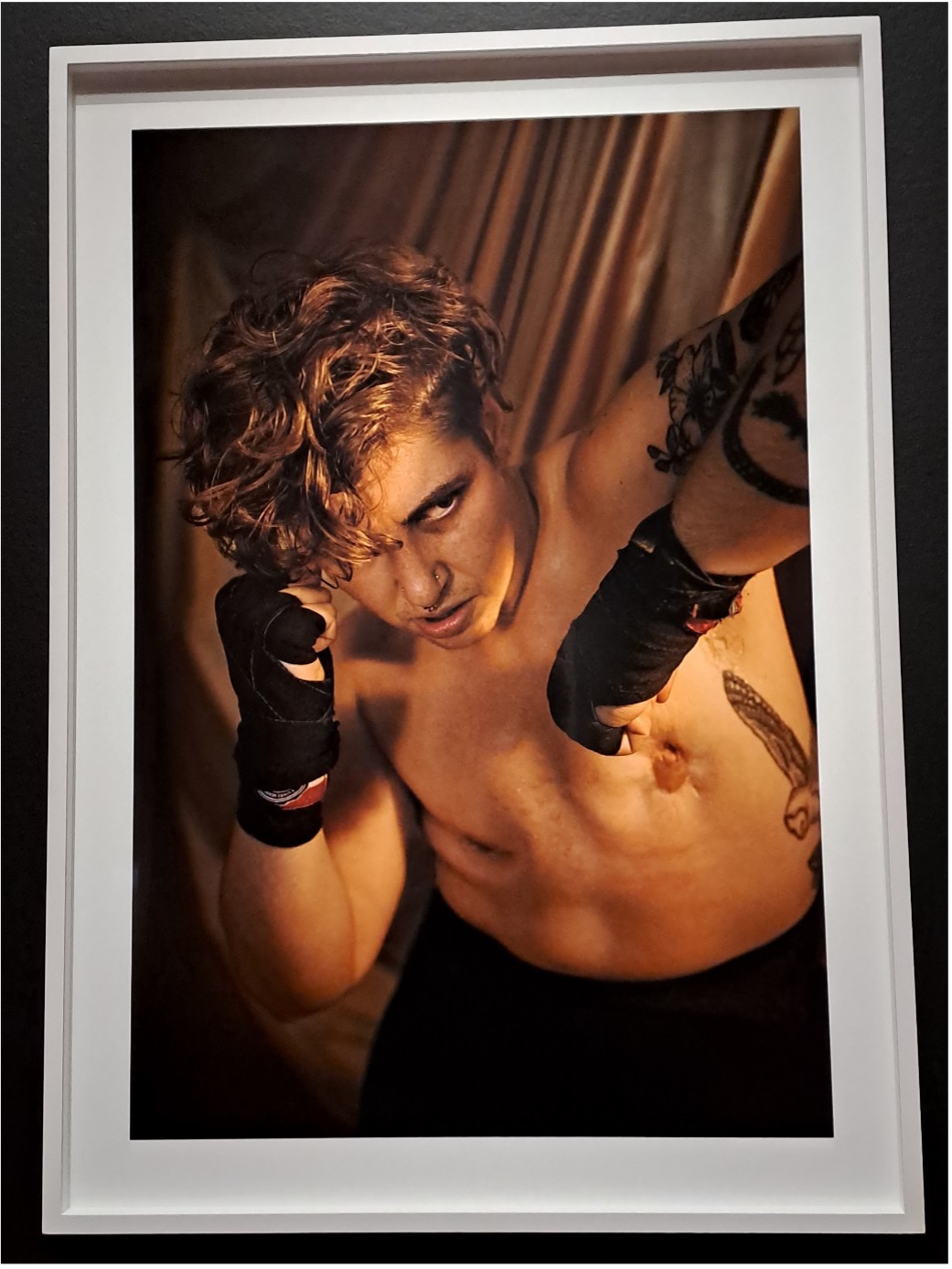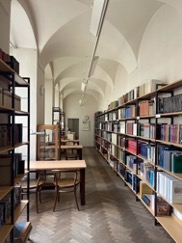Tessa Trethowan Dissertation Bursaries
The Tessa Trethowan Memorial Fund was set up in memory of Tessa Trethowan, who graduated from the Department of Art History in 1990. The Fund offers bursaries to help undergraduate students with travel costs and other significant expenses incurred in connection with the preparation of their dissertation. We supported 8 Trethowan bursaries in 2021-22.
In 2022–23, the Fund supported the following projects:
Amelia Hodge - The Influence of Leonardo da Vinci on Jean-Michel Basquiat’s Oeuvre
Jean-Michel Basquiat was a radical who brought a new lease of life to the artworld in the 1980s. Yet his sources of inspiration were more traditional than expected. He became fascinated with Leonardo da Vinci’s anatomical drawings after being knocked down by a car aged seven. The incident catalysed his anatomical obsession and saw him acquire a facsimile of Leonardo’s works. He cleverly incorporated Leonardo’s notebook style into his artworks, using diagrams with annotations, mirror writing and directional arrows. This admiration culminated in the numerous anatomical paintings he made in 1982–83. With support from the Trethowan Bursary, Amelia was able to visit the exhibition ‘The Retrospective. Basquiat’ at the Albertina Museum in Vienna, which gave her first-hand experience of several artworks discussed in her dissertation.

Basquiat, Flesh and Spirit, 1982–83
Anne Moorhouse - Laughing Matter: Disguised humour and the visual joke in seventeenth-century European art
A Trethowan Bursary enabled Anne to travel to Amsterdam to view works of the Dutch Golden Age housed in the Rijksmuseum. These became the framework for her dissertation on the significance of the visual joke as one of the most important devices used by seventeenth-century artists as an expression of truth. For the classical scholar Cicero, humour was “an imitation of life […] an image of truth”. With the rise of Neoclassical ideas in seventeenth-century Europe, artists came to feel the rigidification of the creation and consumption of artworks keenly. The connection between art and classical ideas on decorum and rationality was transparent; humour, as a fundamentally low concept, had no place in this higher sphere. Humour and – in order for it to prevail unopposed – disguised humour, were now recognised as a powerful iconographic and rhetorical tool for commenting on society and relaying ‘an image of truth’ to the viewer. This came to challenge traditional ideas regarding the purpose of art and the ‘correct’ manner of interpreting it. One of the greatest ‘jokes’, therefore, is the viewer’s response. The viewer is inevitably complicit in or ignorant of the joke – the artist laughs with or, otherwise, at you.

Nicolas Poussin, ‘The Triumph of Pan’, 1636
Guste Matulionyte - Africa and Baltars: Aleksandra Beļcova’s Africa (1926) and Negro Motif (1926) porcelain painting designs
Guste’s dissertation examined three decorative plate designs Aleksandra Beļcova produced for the Baltars porcelain painting workshop in 1926: Africa, Negro Motif (Mask) and Negro Motif (Fantasy). Beļcova’s designs were likely inspired by a range of visual and literary sources pertaining to the African continent present in early twentieth century Riga, as well as various African art objects that were in European museum collections and markets at the time. These plates are compelling examples of interest in the African continent among contemporary Latvian avant-garde artists. The Trethowan bursary enabled Guste to travel to Riga, where she visited institutions such as the Museum of Decorative Arts and Design, the Romans Suta and Aleksandra Beļcova Museum, and the National Library of Latvia. This gave her an opportunity to observe Beļcova’s designs in person and access a range of academic materials concerning the production of Baltars.

Aleksandra Beļcova, Negro Motif (Fantasy), 1926. Decorative plate. Museum of Decorative Arts and Design, Riga, Latvia.
Henrietta Franks - Illusionism and the Display of Luxury in Dutch Still Life Paintings of the Seventeenth Century
Artists of mid-seventeenth-century Holland employed formal and illusionistic techniques in still life paintings to present deceptively realistic visions of wealth and abundance. These paintings constituted an essential part of Dutch visual culture, due to their role in proliferating cultural attitudes towards materialism, as well as cultivating and affirming the affluent social status of both the artist and the viewer. A Trethowan Bursary funded a visit to the Rijksmuseum in Amsterdam, where Henrietta was able to view the pictorial illusions and naturalistic detail of these works first-hand and experience their conflation of the boundaries between art and reality.

Adriaen van Utrecht, Pronkstilleven, 1644
Jack Wagner - Trace-ing Digital Presence and Performativity in Anne Imhof’s Youth
Jack’s dissertation explored the impact of digital technology on performativity in Anne Imhof’s Youth, installed in the Stedelijk from 2022-2023. With Youth, Anne Imhof removed the live performer from the art institution, marking a dramatic shift in her artistic career. Jack’s dissertation combined his embodied experience with a critical analysis of how the digital world can interact with the neoliberal institution to contort means of being present or being absent. Funding from the Trethowan bursary enabled Jack to visit this installation in Amsterdam to experience it at a visceral level.

Anne Imhof, Youth, Stedelijk Museum, 2022–23
Leo Palma - Water and Glass: transgender transparency in Elle Perez and Paul Mpagi Sepuya’s Photography
The Trethowan bursary allowed Leo to visit the exhibition “Devotions” at the Baltimore Museum of Art. “Devotions” is a solo exhibition of works by transgender artist Elle Pérez (they/them), who uses photography as a tool to express, build and foster intimacy and affection. The artist’s practice and exhibition strategies allow for emotive resonance between the viewer and the photographs, subverting the way queer, gender non-conforming, non-white subjects have historically been represented in photography. By changing the relationship between artist, subject and viewer to an intimate, personal and visceral exchange which still retains a sense of mystery, Pérez allows for a transgender re-organisation of the power dynamics of the gallery space.

Elle Pérez, Wilding Shadowboxing, 2020
Phoebe Long - Mindfulness in the Everyday: an investigation into the influence of Japanese aesthetics and philosophy in the therapeutic architecture of Richard Neutra and Rudolph Schindler
Viennese architects Rudolph Schindler and Richard Neutra both emigrated from Vienna to Los Angeles in the early twentieth century in pursuit of an architecture that supported the holistic wellbeing of its occupants. Phoebe’s dissertation explored how the houses that these architects designed shared parallels with Japanese architecture in its embrace of nature as an intrinsic tool for ensuring a healthy, happy existence. With the aid of the Trethowan Memorial bursary, Phoebe was able to fly to Los Angeles and visit both of her case studies – Schindler’s Kings Road House (1921) and Neutra’s VDL Research House (1932) – in person, as well as carry out key archival research at the Getty Research Institute. Experiencing these architectural spaces first-hand enabled her to gain a deeper insight into Schindler and Neutra’s naturalistic approaches and their affinities with Japanese design.

Rudolph Schindler, Kings Road House, 1921, Los Angeles
Denisa Dobrovodová - Aesthetic, Erotic and Constrained: The Portrayal of Women in Czech Art Between 1880 and 1914
Denisa’s dissertation examined portrayals of women in Czech art of the late nineteenth and early twentieth centuries, an area which is under-researched in academic scholarship. With the aid of a Trethowan bursary, Denisa was able to conduct a research trip to Prague. Visiting libraries and archives, she engaged with written primary sources, particularly the art periodicals Volné Směry (Free Directions) and Dílo (Oeuvre), which were key to understanding the state and the development of Czech art during the period. Denisa was also able to visit the National Gallery and the Family Collection: Mucha Exhibition organised by the Mucha Foundation, conducting in-person visual research into the treatment of female subjects in Czech painting.

The Library of the National Gallery, Prague